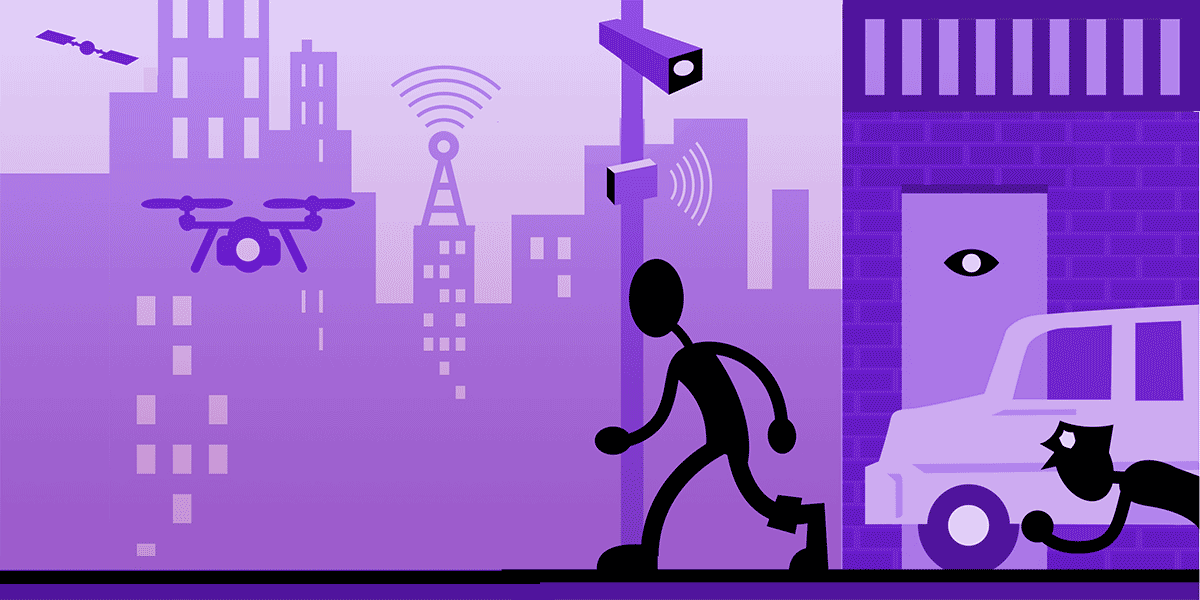Federal Judge Rules Baltimore's Secret Spy Planes Violated The Constitution
"A Federal Appeals Court has ruled against the Baltimore Police Department’s (BPD) use of an aerial surveillance program that monitored almost the entire city from above, calling the surveillance unconstitutional and a violation of the Fourth Amendment.
Equipped with wide-area surveillance cameras originally developed for military use, Baltimore police flew spy planes that captured up to 12 hours of footage a day throughout the six month pilot of the program, known as the AIR, or Aerial Investigation Research. The program was originally deployed in secret without the knowledge of city officials, and financed by two Texas billionaire entrepreneurs who had previously invested in surveillance technology.
Chief Judge Gregory wrote this in his decision for the Maryland Fourth Circuit Court of Appeals
The surveillance planes are owned by Persistent Surveillance Systems, which also employs the analysts who review the data and footage for BPD. Although the BPD stated that the AIR imagery could not be used to identify individuals, PSS also had access to the city’s CCTV cameras and Automated License Plate Readers.
“The court held that this kind of persistent surveillance, which is warrantless, violates a reasonable expectation of privacy and violates the constitution,” Gorski senior staff attorney for ACLU's Security Project told Motherboard.
“We think it's a very important precedent, especially as other cities may be considering deploying this kind of technology.”
=========================================================================
RELATED CONTENT
[VISUAL] The Overlapping Infrastructure of Urban Surveillance, and How to Fix It
[VISUAL] The Overlapping Infrastructure of Urban Surveillance, and How to Fix It
Between the increasing capabilities of local and state police, the creep of federal law enforcement into domestic policing, the use of aerial surveillance such as spy planes and drones, and mounting cooperation between private technology companies and the government, it can be hard to understand and visualize what all this overlapping surveillance can mean for your daily life. We often think of these problems as siloed issues. Local police deploy automated license plate readers or acoustic gunshot detection. Federal authorities monitor you when you travel internationally.
But if you could take a cross-section of the average city block, you would see the ways that the built environment of surveillance—its physical presence in, over, and under our cities—makes this an entwined problem that must be combatted through entwined solutions. . .
Between the increasing capabilities of local and state police, the creep of federal law enforcement into domestic policing, the use of aerial surveillance such as spy planes and drones, and mounting cooperation between private technology companies and the government, it can be hard to understand and visualize what all this overlapping surveillance can mean for your daily life. We often think of these problems as siloed issues. Local police deploy automated license plate readers or acoustic gunshot detection. Federal authorities monitor you when you travel internationally.
But if you could take a cross-section of the average city block, you would see the ways that the built environment of surveillance—its physical presence in, over, and under our cities—makes this an entwined problem that must be combatted through entwined solutions. . .
Mass Surveillance Is Coming to a City Near You
A tech entrepreneur wants to track the residents of a high-crime American community.
The tech entrepreneur Ross McNutt wants to spend three years recording outdoor human movements in a major U.S. city, KMOX news radio reports.
If that sounds too dystopian to be real, you’re behind the times. McNutt, who runs Persistent Surveillance Systems, was inspired by his stint in the Air Force tracking Iraqi insurgents. He tested mass-surveillance technology over Compton, California, in 2012. In 2016, the company flew over Baltimore, feeding information to police for months (without telling city leaders or residents) while demonstrating how the technology works to the FBI and Secret Service.
The goal is noble: to reduce violent crime.
There’s really no telling whether surveillance of this sort has already been conducted over your community as private and government entities experiment with it. If I could afford the hardware, I could legally surveil all of Los Angeles just for kicks.
And now a billionaire donor wants to help Persistent Surveillance Systems to monitor the residents of an entire high-crime municipality for an extended period of time––McNutt told KMOX that it may be Baltimore, St. Louis, or Chicago.
McNutt’s technology is straightforward: A fixed-wing plane outfitted with high-resolution video cameras circles for hours on end, recording everything in large swaths of a city. One can later “rewind” the footage, zoom in anywhere, and see exactly where a person came from before or went after perpetrating a robbery or drive-by shooting … or visiting an AA meeting, a psychiatrist’s office, a gun store, an abortion provider, a battered-women’s shelter, or an HIV clinic. On the day of a protest, participants could be tracked back to their homes.
In the timely new book Eyes in the Sky: The Secret Rise of Gorgon Stare and How It Will Watch Us All, the author Arthur Holland Michel talks with people working on this category of technology and concludes, “Someday, most major developed cities in the world will live under the unblinking gaze of some form of wide-area surveillance.”
![Persistent Surveillance Systems has been watching Baltimore for months [Updated] | Ars Technica](https://cdn.arstechnica.net/wp-content/uploads/2014/07/pss.overview-640x382.jpg)




No comments:
Post a Comment